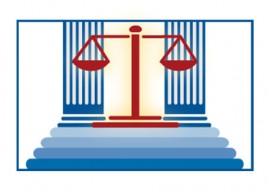Rule 5.6: As Written or As Applied?
By: Ronald C. Minkoff [Originally published in NYPRR December 2010]
[Note: In this article, I use “partner” and “partnership” as short-hand for, respectively, all the principals in a law firm (including shareholders, members, etc.) and all law practice agreements and arrangements.]
New York attorneys who represent lawyers and law firms in partnership transition matters soon become familiar with New York Rule of Professional Conduct 5.6(a) (Rule 5.6(a) or the Rule), which states:
A lawyer shall not participate in offering or making:
(a) a partnership, shareholder, operating, employment or other similar type of agreement that restricts the right of a lawyer to practice after termination of the relationship, except an agreement concerning benefits upon retirement.
Rule 5.6(a), which has been adopted verbatim from the Model Rules and exists in essentially the same form in all 50 states, is substantively identical to its predecessor under the New York Code of Professional Responsibility, DR 2-108(a). As the Comment accompanying the Rule makes clear, the purpose of the Rule is to enhance attorneys’ “professional autonomy” and avoid contractual limitations that discourage clients from retaining the lawyer of their choice. [See Rule 5.6(a), Comm. 1]
This article will explore the scope of Rule 5.6(a) as it has been applied in case law and ethics opinions across the U.S., and how the Rule’s utility in partnership disputes can be expanded. More specifically, the article will analyze whether Rule 5.6(a) applies only to partnership agreement provisions that on their face restrict partner mobility — the focus of the vast majority of cases in this area — or whether the Rule also applies to facially neutral provisions that, as implemented by jilted law firms in specific situations, violate the language of, or policies behind, the Rule.
Rule 5.6(a) Applies to Clauses ‘As Written’
Under existing case law and ethics opinions, Rule 5.6(a) has been applied to prohibit many different types of contractual provisions governing law firm departures or breakups, including those which:
(a) divide the clients of the firm among departing partners (“Partner A takes the clients living north of the river, and Partner B takes those living south of the river”) — Dwyer v. Jung, 133 N.J. Super. 343, 336 A.2d 498 (1975);
(b) impose onerous geographical restrictions (“Any departing partner may not practice law within 300 miles of any office of this firm”) — Judge v. Bartlett, Pontiff, Stewart & Rhodes, P.C., 197 A.D.2d 148, 610 N.Y.S.2d 412 (3d Dept.), lv. to app. den., 84 N.Y.2d 803, 641 N.Y.S.2d 148 (1994);
(c) limit profit participation to those who remain at a firm post-merger (“if this firm merges, only those who remain will get their profit percentage for the year”) — DC Bar Op. 325 (2004);
(d) and, most famously, those which impose financial penalties for competing with the firm (“if you leave our firm and continue to practice law in this City, you have to pay us 75% of all that you earn from any firm client you take with you”).
These last are often called “forfeiture for competition” clauses. Typical is Cohen v. Lord Day & Lord, 75 N.Y.2d 95, 551 N.Y.S.2d 157 (1989), in which a withdrawing partner sought a departure payment due under the firm’s partnership agreement. The agreement also provided, however, that the payment would be forfeited if the withdrawing partner continued to practice law in any jurisdiction in which the law firm had an office or in any contiguous jurisdiction. The New York Court of Appeals held that this financial penalty violated Rule 5.6(a), noting that any partnership provision requiring a departing lawyer who competes with the firm to forfeit earned revenues constituted an impermissible restriction on the lawyer’s practice and discouraged a withdrawing partner from taking on clients who might want to follow him.
This absolute prohibition on “forfeiture for competition” clauses represents the majority view among the states. See R. Minkoff, “Compilation of Cases Involving Restrictive Covenants Among Law Partners (MR 5.6/DR 2-108),” Coursebook for 33rd National Conference of Professional Responsibility (ABA Center for Professional Responsibility 2007) (nationwide compilation of cases).
A significant and growing minority of states takes a more nuanced view, permitting financial restrictions on withdrawal to the extent they are reasonably necessary for the protection and stability of the firm, so long as they do not restrict lawyer mobility or client choice. See, e.g., Hoffman v. Levstik, 369 Ill.App.3d 144, 860 N.E.2d 551 (Ill. 2006); Fearnow v. Ridenour, Swenson, Cleere & Evans, P.C., 213 Ariz. 24, 138 P.3d 723 (Ariz. 2005); Howard v. Babcock, 6 Cal. 4th 409, 863 P.2d 150 (1993).
But for our purpose, the most important point is that the focus of the courts’ analysis in all these cases is on the words of the forfeiture provision itself: what it says, to which departing partners it applies, and whether and to what extent it will have a significant economic or anticompetitive impact. See, e.g., Hackett v. Milbank Tweed Hadley & McCloy, 86 N.Y.2d 146, 630 N.Y.S.2d 274 (1995) (upholding arbitration award which said forfeiture clause was permissible because it applied equally to all departing lawyers, not just to those who competed with firm).
This type of analysis, which limits the application of Rule 5.6(a) to how the offending provision reads on its face, may be too narrow to fully protect lawyers and the public.
Rule 5.6(a) ‘As Applied’
In daily practice, attempts to create economic hardships for departing lawyers are not always as clear-cut as putting blatant “forfeiture for competition” clauses in partnership agreements. Whether out of a need for economic self-preservation, a sense of betrayal, or just plain spite, many law firms act aggressively to take earned compensation away from departing partners. Very often, their partnership agreements do not contain obvious restrictive clauses; those who wrote them knew better than to include such things. Instead, the law firms take facially neutral clauses and use them to punish their departing colleagues economically. Whether this constitutes a violation of Rule 5.6 remains unclear under existing case law. To understand why, we will use three examples.
First Example: Discretionary Compensation Systems
Many law firm partnership agreements set up a compensation system in which one or more firm partners — often, the leaders or founders of the firm — are named as the firm’s “compensation committee.” This committee is given complete discretion to set year-end compensation for all partners. Often, when a partner departs (particularly if she departs near year-end, but before year-end distributions have been made), the committee will reduce her year-end distribution from what it would have been and give some of the profits she would have earned to partners who have decided to stay, in effect rewarding the partners who stay by penalizing those who leave. Cases which have addressed this issue have often found that this decision to favor some partners over others constitutes a breach of fiduciary duty. See, e.g., Smith v. Brown & Jones, 167 Misc. 2d 12, 633 N.Y.S.2d 436 (Sup. Ct. N.Y. Co. 1995), aff’d sub. nom Stuart v. Lane & Mittendorf, 235 A.D.2d 294, 652 N.Y.S.2d 951 (1st Dept. 1997).
Yet this situation also could be governed by Rule 5.6(a), since the compensation committee is using the discretionary power given to it under the partnership agreement to punish the lawyer for leaving, a result exactly the same as applying a forfeiture for competition clause.
There is a counterargument: that with a forfeiture for competition clause, a lawyer thinking about withdrawal will read it and be discouraged from leaving, while in our discretionary example the lawyer has no idea what will happen. Put another way, it is not the clause itself that is restrictive, but the actions of the partners implementing it, and Rule 5.6 addresses only agreements that “restrict the practice of law,” not lawyer actions that do. But experience shows this is a distinction without a difference: lawyers, whether in small or large firms, often know exactly how the powers-that-be will behave, and have the same in terrorem fears as lawyers whose firms have written restrictive covenants. it is the anti-competitive effect of the law firm’s application of the clause that is crucial.
Somewhat similar in effect is Anderson v. Aspelmeier, 461 N.W.2d 598 (Iowa 1990). There, a law firm partner left his firm, taking 325 of 329 notified clients with him. Under the firm’s partnership agreement, departing partners were entitled to a two-tier payment: repurchase of shares, and then an eight year payout to cover the value of the partner’s interest above the net purchase price. The second tier, however, could be withheld if the withdrawing partner “committed an action which is so detrimental to the partnership [that it] affects the value of the remaining partners’ interest in the partnership.” The firm claimed that the taking of so many clients violated that clause, and sought to avoid the second tier payment. The Iowa Supreme Court disagreed, finding that the clause acted to penalize the departing partner for exercising his right to change firms, and thus violated Rule 5.6(a).
Significantly, the Anderson law firm’s “detrimental action” clause did not focus solely on competition. In that sense, it is facially neutral: no one could dispute that it could properly be applied, for example, to a departing partner who looted the firm’s escrow accounts and permanently damaged the firm’s reputation and the value of the remaining partners’ interests. In Anderson, it was the way the clause was applied that was crucial: the firm used the clause to penalize a departing partner for taking the firm’s clients. That application, more than the clause itself, was found to violate Rule 5.6(a).
Second Example: Confidentiality Provisions
Most law firm partnership agreements contain detailed confidentiality provisions, designed to ensure that the firm’s financial affairs are not revealed publicly. Typical is this provision, defining “Confidential information” as:
(1) the terms and conditions of this Agreement; (2) all information relating to client matters that are subject to attorney-client privilege or work product privilege and all confidences and secrets of a client that must be treated as confidential pursuant to applicable rules of professional conduct, (3) information not publicly known relating to prospective partner candidates, (4) non-public information designated as such by the management Committee; and/or (5) any other non-public information relating to the business or affairs of the partnership for which disclosure to or use by third parties would be detrimental to the partnership as determined by the management Committee.”
In a recent arbitration I conducted on behalf of a withdrawing partner, the firm tried to use a facially-neutral confidentiality clause like this to support its claim that the withdrawing partner should forfeit earned compensation because he provided the prospective new firm with information about which clients he intended to bring with him (which he had to provide for conflict checking purposes), about collections from those clients (which the new firm wanted in order to decide how much to pay the prospective partner), and about restrictions in withdrawal provisions in the existing firm’s partnership agreement (which the new firm wanted to review in order to protect itself against possible tortious interference claims). The arbitrators, in a confidential decision, ruled that the information the withdrawing partner provided to the new firm was needed to enable him — indeed, any transitioning lawyer — to change firms, and applying the confidentiality clause to penalize him for doing so would violate Rule 5.6(a).
Thus, again, Rule 5.6(a) was used to turn a facially neutral clause into a weapon against the law firm and a shield for the departing partner.
Third Example: Anti-Poaching Clauses
Perhaps the most extreme example of the “as applied” use of Rule 5.6(a) is found in Nixon Peabody LLP v. De Senilhes, Vasamdidis, Amsallem, Jonath, Flaicher Assocs., No. 2008/10374, 2008 WL 4256476 at *3–4 (N.Y. Sup. Ct., Monroe Co., Sept. 16, 2008)
There, two law firms contemplated a merger, and entered into a confidentiality agreement under which the firms agreed to share their confidential business information and to prohibit either firm from using that information to hire he other firm’s partners if the merger fell through. The deal cratered and one firm poached several partners from the other. The court refused to enforce the parties’ confidentiality agreement, claiming that its restrictions on hiring created a restrictive covenant that violated Rule 5.6(a).
This decision shows the danger of “as applied” use of Rule 5.6(a), since the court virtually ignored the main purpose of the parties’ agreement (to protect confidentiality in the course of the parties’ merger discussion) and focused on the penalty provision designed to enforce that goal (the restriction on hiring). Indeed, it is questionable whether this type of agreement between law firms is really a “partnership, shareholder, operating, employment or other similar type of agreement” contemplated by Rule 5.6(a). Basic principles of construction suggest otherwise, since all the listed agreement types are between and among law firm principals, and thus involve settings in which trafficking clients among lawyers and the use of financial disincentives to discourage partner movement — the dangers Rule 5.6(a) was created to combat — are most likely to occur.
Nevertheless, Rule 5.6(a)’s application should not be limited to partnership agreement provisions which, by their plain terms, discourage client choice or lawyer mobility. Its application should be broader, and should cover a law firm’s use of seemingly neutral provisions in ways that contradict the Rule’s policy goals. This will make partner transitions smoother by evaluating the conduct of law firm decision-makers based on something more than just common law fiduciary duty principles enforceable in court, an arena where the law firm generally has advantages because of its superior resources. Instead, that conduct will be subject to professional discipline under the Rule, and will make law firms think twice before trying to take advantage of their departing partners.
Ronald C. Minkoff is an Adjunct Professor of Professional Responsibility at NYU School of Law and the Head of the Professional Responsibility Group at Frankfurt Kurnit Klein & Selz, P.C. in New York City. He can be contacted at rminkoff@fkks.com.
DISCLAIMER: This article provides general coverage of its subject area and is presented to the reader for informational purposes only with the understanding that the laws governing legal ethics and professional responsibility are always changing. The information in this article is not a substitute for legal advice and may not be suitable in a particular situation. Consult your attorney for legal advice. New York Legal Ethics Reporter provides this article with the understanding that neither New York Legal Ethics Reporter LLC, nor Frankfurt Kurnit Klein & Selz, nor Hofstra University, nor their representatives, nor any of the authors are engaged herein in rendering legal advice. New York Legal Ethics Reporter LLC, Frankfurt Kurnit Klein & Selz, Hofstra University, their representatives, and the authors shall not be liable for any damages resulting from any error, inaccuracy, or omission.
Related Posts
« A Thoughtful Case on Advocate-Witness Rule In-House Registration Proposal Approved by State Bar »








